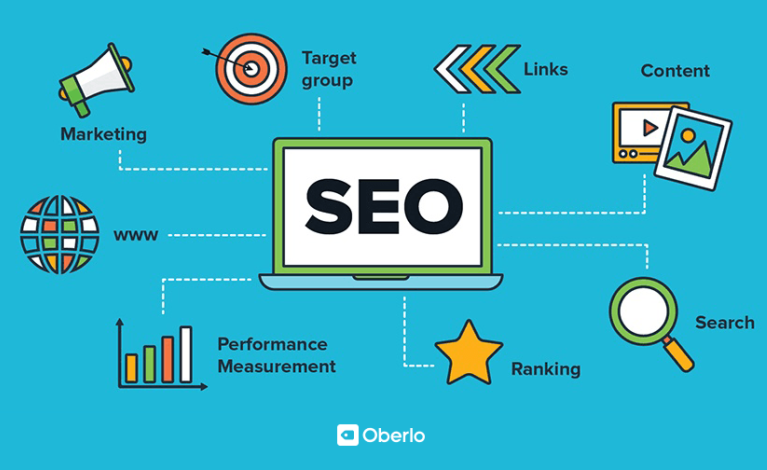Ecommerce SEO is all about driving traffic to your store; it doesn’t matter if you have the best products or not. If people ain’t clicking the business is going to fail.
To help you out, I’ve listed four essential SEO steps to build yourself a dependable store:
Step 01 – Audit Your Site
The most common mistake any eCommerce startup makes is jumping straight to link building. Most of the time the problems are a lot closer to home than you think.
It’s like building your house on sand; eventually, it’s going to sink!
Before you do anything your need to make sure there are no on-site problems, the most common being:
- Technical issues
- No content/Duplicate content
- Hard to Crawl
To find out what’s up, you’ll need to run an audit on your eCommerce site. For this, you have many tools you can use, such as SEMrush and Ahrefs.
But today we’re going to talk about Screaming Frog:
It’s the most competent tool to use for an audit, and the best part is, it’s free to use for up to 500 URLs. After that, you’ll need to pay a yearly license of £149.
Auditing your site with Screaming Frog couldn’t be easier, just follow these quick and easy steps:
- Enter your eCommerce’s main URL into the search bar and press Crawl
- Once the Crawl has completed, you can export the data
- To make the information easier to read filter the data with HTML only
- You’ll then be shown the dashboard, from here you should save the work FILE>SAVE
From the dashboard, you’ll be able to find solutions to all the problems with your eCommerce site. Go to the filter and search for any duplicate content on the website.
If you find any fix it, Google will only index one of the pages, which means you could be losing organic search traffic.
Step 02 – Keyword Research
Google has many ranking factors, but keywords are still to this day one of the biggest. It’s something you have to keep in mind if you want your site to succeed.
Finding the right keywords will help you drive traffic to your site, and this is the key to success for any online shop. In this section, I’m going to show you what makes the perfect keyword and what mistakes you should avoid:
Intent Of The Keyword
One of the biggest mistakes I see is when the store owner picks a keyword-based solely on how much traffic it brings. The ultimate goal for selecting the right keyword is to attract qualified traffic.
In other words, it’s a keyword that can drive customers from the right stage of a sales funnel. The lower stage of the funnel has the people ready to spend money, but there are fewer of them, others aim at the top and work them down the sales funnel.
Relevance To Your Store
To attract the right people to your eCommerce store, the keyword needs to be relevant to the intent. This helps to increase the conversion rate of the page. Think about it, what’s the point of using a keyword that doesn’t match the product?
To find out if the keyword is relevant to your store search for it in Google and check out the top 10 results. If those pages match yours, you’ll know the keyword is relevant to your store.
Overall Competition
The key to success is finding a keyword that you realistically compete with. This means finding a keyword with a difficulty that matches your page authority. Think about it; a new store is unlikely to compete with any of the big names (Amazon).
Volume Of Search
You need to consider how many people search for the keyword you’re thinking about. If people don’t search for the term, what’s the point of using it? What accounts as high traffic for one niche might not be the same for others.
You’ll need to compare each keyword in that niche to find out what’s classed as a high traffic keyword. Remember it’s vital that you consider the previous three steps. Picking a keyword solely based on traffic can be a huge mistake.
How To Find Keywords Using Ahrefs
Researching suitable keywords is simple using Ahrefs, just follow these steps to find out if you can rank for your keyword:
- Perform a search for your keyword in Ahrefs Keyword Explorer
- Check the keyword difficulty; Ask yourself, does my page authority match the difficulty?
- Look at the page ranking for that keyword, do they have a similar authority?
Following these steps and asking the right questions is the key to succeeding in your keyword research.
Step 03 – On Page SEO
Just like your everyday websites, on-page SEO is the key to building the right foundations for your eCommerce stores.
The thing is:
Ecommerce SEO has its own challenges.
Below I’m going to show you everything you need to get you on-page SEO work on point:
Links, Links, Links
Internal links are a potent SEO technique, yet they remain the most underused tactics. It helps Google crawl around your site, which it loves. But more importantly, you can choose your own anchor text which helps boost your keywords.
Optimized Images
When people are looking for specific products, they tend to use Google Images, so it pays to use correct image optimization. This means changing file names and Alt tags to include LSI keywords.
Page Titles
The most crucial factor here is to have the keyword as close to the start of the title as possible. This helps Google quickly identify what the page is about. You’ll also need to make people want to click on it.
Meta
The meta description is used to give customers an honest review of what the page is about. It’s also a great place to add some additional keywords. You need to make sure the text is engaging, so people want to click on it.
Step 04 – Link Building
This is the last step you need to take to push your eCommerce store to the top of the rankings. The aim is to gain as many high-quality/relevant links to your store as you can.
By doing this, you can increase your store’s rankings, which results in more profits for you. There are several ways you can build links, but today we are going to focus on two:
Guest Posting
It’s one of the most commonly used techniques to score links to your page. And doing it is easy, it’s just not as cheap as it used to be.
It’s used to help you build an authentic relationship between bloggers and your store.
Guest posting can be split into five easy steps:
- Search for opportunities using Google search
- Make sure the page is relevant
- Pitch to the blog
- Write engaging content with a link to your page
- Get the post published
Finding your guest posting opportunities takes a quick Google search; this could be by using search terms such as:
“Keyword” + Guest blogger
“Keyword” + Write for us
“Keyword” + Add guest post
Copy and paste all the results into an Excel sheet, don’t worry about the relevance just yet you can qualify them later.
Once you have a complete list, it’s time to analyse each site, to do this, you need to be thinking about a few things:
- Niche relevance
- Domain authority
- Number of referring links
- Trust flow
From there it’s a case of outreaching to each one of the sites you deem worthy. This can take some time to complete, so I recommend using tools like Ninja Outreach or Pitchbox to complete the task.
If you don’t get a reply from your first pitch, don’t give up.
A lot of blog owners are receiving a high quantity of emails; yours may have been missed. Make sure you follow up after 6-7 days. If they still don’t answer, try one more time before moving on.
Most site owners will be looking for something in return for the post.
Like I said guest posting isn’t cheap, and depending on the DA (Domain Authority) they could cost £0-120+ per post.
Analysis Your Competitors
I’ve saved the best till last; competitor analysis allows you to quickly rank your pages by replicating what the people at the top are doing. You’ll need to use Google to find the top 10 pages that are ranking for your keyword.
From there use Ahrefs to find out what backlinks they use for that page. Find all the high domain sites that are linking to it and ask yourself “what did they do to get the link.” This will give you a great idea of where to start.
Round-Up
Building an eCommerce shop is a very viable option for a second hustle in this day and age. But it does take some planning. Just remember there are four stages to building a sustainable store:
- Audit your site
- Research your keyword
- Clean up your on-page SEO
- Link build
With these four easy steps, you can build your way to success quickly and efficiently.

